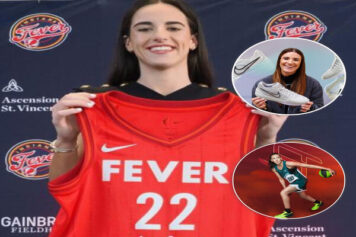Though the language spoken is Zulu, the stories are universal to anyone who has ever chased dreams in the Big City.
The lore of the big city is something that has been pulling at the heartstrings of young and ambitious travelers since the time hunter-gathering cultures were first encouraged to abandon their wandering ways and settle down due the introduction of farming, which meant an abundant food source that they didn’t have to travel long distances, or risk life and limb, to get to.
A widely held view among urban studies experts posit that cities are only able to maintain themselves if the advantages of living in a city continue to outweigh the inherent disadvantages of doing so.
Even in today’s fast-paced societies, with skylines crowned with spires that scratch the sky’s eye like man-made mountains, many of the things that make us get up and go to ‘the big city’ are cultural equivalent to the reasons so many traveled across varying topography and geography amid great hardship in the past. That being the hope for opportunity.
In Vaya, we see three young travelers who are lured to the city for different reasons, but each soon finds that it is a ravenous leviathan that threatens to swallow them all.
ARRAY’s ‘VAYA’ | Theatrical Trailer
COMING TO SCREENS OCTOBER 2018 | Details at http://www.arraynow.com/vaya In filmmaker Akin Omotoso’s VAYA, the title is a phrase spoken in South African townships meaning “to go.” VAYA takes viewers along on a journey of three young South Africans who travel away from their rural homes on a train bound for Johannesburg.
Directed by Nigerian filmmaker Akin Omotoso, Vaya, which means “to go” in Zulu, was created from the stories of participants from a program called The Homeless Writers Project and addresses human trafficking, migration, extreme poverty, desperation, and hopelessness that can arise from dreams deferred.
Bright young star in the making Zimkhitha Nyoka plays Zanele, a young woman tasked with bringing a child from her distant village to be with her mother, while Nkulu (Sibusiso Msimang) is charged with fetching the body of his dead father, and returning it to his mother for burial while Nhlanhla Xaba is tired of the communal life of his village and is lured by his “prosperous” cousin with hopes of obtaining a lucrative job.
undefined
undefined
I recently spoke with Akin regarding this beautifully shot and riveting urban tale that is universal throughout the human experience.
The Shadow League: How did this project begin?
Akin Omotoso:
It began as a place where people from the streets could share their stories as something therapeutic. They were in a safe space where their story was valuable. We wanted to know how they got on the streets. They met every Wednesday at our office, and we still meet. But what happened over the years, the group got smaller and smaller because life on the streets is transient. People come and go all the time. But four gentlemen remained. Those four guys, their experience, their lives and what they witnessed became the DNA of the film.
Everybody loves the idea of opportunity and Johannesburg, very much like New York or maybe a little like California. A lot of the people are there for opportunities and Johannesburg has always had that because of the mines and because of the legacy of Apartheid and the legacy of people leaving the village to go work in the mines. Husbands leaving home and never coming back. Mothers going to look for their husbands and never coming back. Children going to look for their parents. So, there’s a very strong historical, political link there in terms of building a society.
In addition to being about the lives of three main characters, the city of Johannesburg acts as a fourth character. Akin Omotoso’s choice of camera angles and cinematography, including swooping crane shots, a slowly panning god’s eye view, and as well as other shots, breathed life into the Burg of 4.4 million people. Though it may seem like a simple thing, even seasoned directors struggle with this.
Director Akin Omotoso | The Journey of ‘VAYA’
COMING TO SCREENS OCTOBER 2018 | Details at http://www.arraynow.com/vaya/ Paying homage to the Tsotsitaal namesake meaning “to go”, filmmaker Akin Omotoso’s VAYA chronicles the innocence lost by three young South Africans who journey away from their rural homes on a train bound for Johannesburg.
(continued)
Akin:
Me and my partner said ‘Let’s have this view of Johannesburg that shows the audience what the characters are there for and while we’re focusing on this story it alludes to there being another story just through the next door. That was what was at stake so we decided to use the drone shots to take us in and out of scenes, take us back, and then swoop down.
We also put the camera on the ground to where we’re coming in at cockroach level. We wanted this kind of interpretation to give you a full idea of what it’s like coming to the city. And I think it’s the way you use visual language. Normally those shots are just set up shots to establish where we are in the film but we wanted to go deeper than that. We wanted the very act of pulling out of the scene and pushing back in, to mean something. The drones were locked into the cinematic style and it doesn’t feel like there’s just a B reel.
TSL: Zanele’s story is the one that kept me at the edge of my seat the most. She relies on the kindness of strangers as soon as she arrives, making her vulnerable. The mastery with which the script “showed” us the danger without “telling” us was apparent with every scene she appeared in.
Akin:
I think it was a conversion of a couple of things. Firstly, the script. You think something’s going to happen, but nothing happens, so you’re constantly on this emotionally push and pull. So, the script had already given us a template for that. Also, there’s the actress herself. She was able to give you that vulnerability.
I don’t see her as naive. She comes to the city with an open heart. But she comes with a knife. She comes strapped! She’s a character that’s complex in the sense because she says I’m going to give this thing a shot, but I’m going to have my knife with me just in case. To me, she’s almost better prepared for the city than the two guys.
Though many Americans immediately frown at the idea of subtitles, listening to the characters speak their native language of Zulu and reading the subtitles allows for greater immersion into the world in which these characters live.
TSL: Besides traveling to the city, what other commonalities do these characters have?
Akin:
What came out of the Homeless Writers Project, and was illustrated in the film, is a lot of them were betrayed by family. These three people are coming in under the premise of what their family asked them to do. Then, what we witness is a betrayal. Then they grow through that experience.
TSL: Tell me about the immensely flawed character Thobeka, played by Nomondi Mbusi?
Akin:
She’s the embodiment of ‘I forgot what I came to the city for’, which was to sing. The village put money together, they wanted a part of it too because she could sing and they wanted it to be beneficial for them. She gets to the city and realizes ‘Wait a minute! There are hundreds of singers here just like me!’ Then you park your dreams and do this other thing but ultimately that other thing becomes the thing because you’ve got to survive in the city. She was such a great character to shoot and was well played by Nomonde and in South Africa, she won a Best Actress Award for that part. She really brought everything to it.
TSL: Tell me about your reaction when you found out ARRAY and Ava DuVernay were interested?
Akin:
You couldn’t wipe the smile off my face. I’ve been a fan of Ava’s, what’s she’s done and what she continues to do. A lot of the filmmakers that she has partnered with are friends of mine. So, for me, this just seemed like the natural place for Vaya.
We always wanted to tell stories and that’s why we were so happy to align with ARRAY and Ava and also align with what she does. Not just for what she does as far as being a pioneer in the film space, but in terms of being a pioneer in bringing these films out so that people can get to see films from other parts of the world and also give filmmakers like me the opportunity to bring our visions to light.
Vaya is currently streaming on Netflix. Released in 2016, Vaya premiered at the Toronto Film Festival this year. It has earned several awards, including Africa Movie Academy Awards for Best Director, Best Achievement in Sound and Best Screenplay while Nomonde Mbusi won the Golden Horn Award for Best Supporting Actress.



